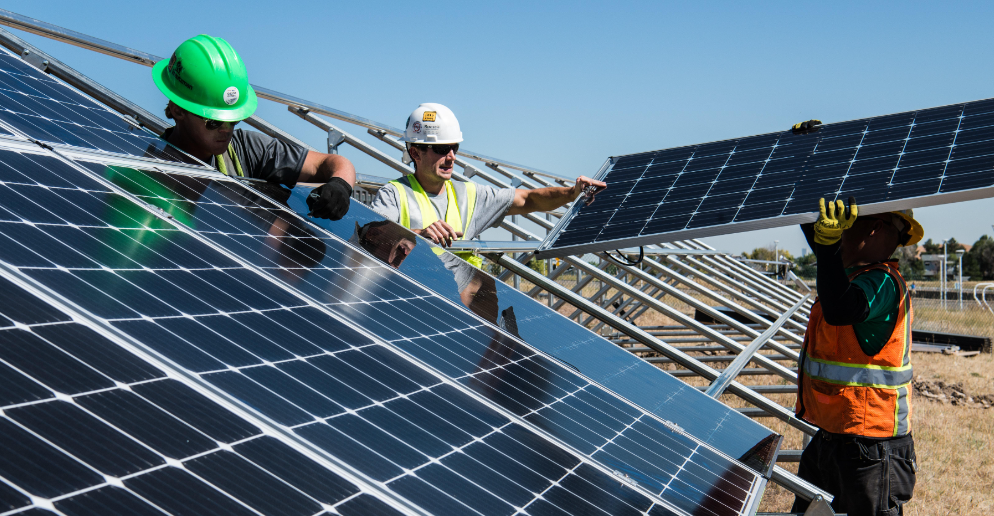Suppose you have a large vegetable garden. You plant a lot of tomatoes in your garden, but you cannot eat them. Incidentally, your neighbor is fond of tomatoes but has no garden. Would you be able to offer your famous tomatoes that you can sell easily to your neighbor? You get some money, and your neighbor gets fresh tomatoes. It’s a win-win.
Now, think about sunlight. Most individuals have rooftop solar systems. These panels may even produce more electricity than the house requires. This surplus is traditionally returned to the large power-fabricated firm, yet the procedure is often complex, and you are probably not going to get a substantial amount of revenue out of it anyway. But, imagine that you could market that additional solar energy right to your neighbors, just as you do tomatoes. Here, a new technology is involved, known as blockchain. It develops a means for individuals to exchange solar energy among themselves, in what is termed peer-to-peer (P2P) energy trading.
What is This Blockchain Thing Anyway?
To examine the principle of how this is so, we must have a discussion about what blockchain is. Consider it as an electronic notebook that is shared with everyone in a group of people. When one adds a new page or a “block” to the notebook, it will be connected to the previous page, forming a “chain.”
Every person in the group has a copy of this notebook. If someone tries to change a page, everyone else’s notebook will show the change, so it’s very hard to cheat the system. This makes the notebook very secure and trustworthy. All the information is open for everyone in the group to see, which makes it transparent. This digital notebook doesn’t need one person or company in charge to approve everything. It works on its own, based on rules that everyone agrees on. This is called being decentralized.
Trading Sunshine with Smart Contracts
So, how does this digital notebook help you sell solar power? The secret ingredient is something called a “smart contract.” A smart contract is like a robot helper that lives inside the blockchain. It’s a program that automatically follows “if-then” rules that you set up.
For example, a smart contract for energy trading could have this rule: “IF my neighbor needs one unit of electricity, THEN send one unit from my solar panels and automatically take the payment from their account.”
These smart contracts take care of the entire buying and selling. They pair individuals with unspent energy to sell to individuals who require it. The trades occur automatically without having a large power company as the intermediary. This would be able to accelerate the process and save on additional expenses.
How It All Works Together
We will go through the process of selling your surplus solar power to your neighbor on the blockchain.
Manufacturing and Measuring Power: To start with, your solar panels supply electric energy. A special smart meter, linked to the internet, gauges the amount of power you produce in comparison with the amount of power utilized. It is also aware of your additional power.
Selling Energy like a Stock: Your additional energy product is subsequently sold customarily via a P2P exchange system. This system is constructed upon the blockchain. Assume that it is a web-based electricity farmers’ market. A unit of energy can be converted to a digital marker, which can be exchanged.
Why Is This a Good Idea?
Facilities like blockchain in trading solar energy have tremendous merits for various individuals.
It is good news to those individuals with solar panels, as it will allow them to make more money out of their investment. They can sell their surplus power out on the open market at a higher price instead of giving the surplus back to the grid at a cheap rate.
It may translate into reduced electrical costs for individuals who purchase the energy. They are able to purchase clean, locally generated power, which sometimes costs them less than the large utility company.
With the assistance of this system, the environment is also assisted. It makes more people install solar panels since they are certain that they will be able to sell the surplus power. The problem with the energy transported over long distances is that much power is used in transferring the energy instead of being generated at a large power plant.
Lastly, it assists in stabilizing our power supply. We do not have a handful of large power-making facilities as we did before, but instead we have numerous minor sources of power within a community. This gives a more robust energy system that will not produce massive outputs easily.

